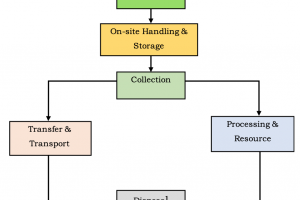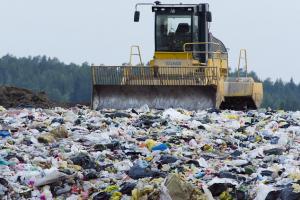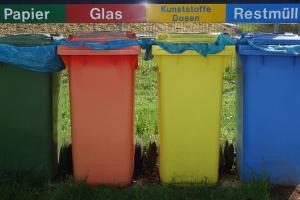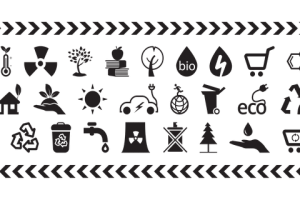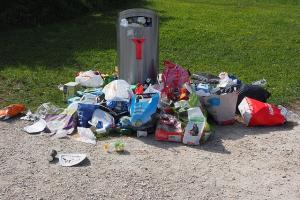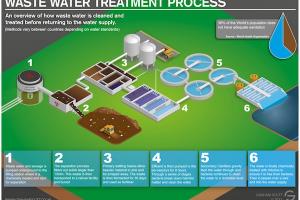Types of Solid Wastes - Based on Origin and Composition
Definition:
Solid wastes are the organic and inorganic waste materials such as product packaging, grass clippings, furniture, clothing, bottles, kitchen refuse, paper, appliances, paint cans, batteries, etc., produced in a society, which do not generally carry any value to the first user(s). Solid wastes, thus, encompass both a heterogeneous mass of wastes from the urban community as well as a more homogeneous accumulation of agricultural, industrial and mineral wastes. While wastes have little or no value in one setting or to the one who wants to dispose them, the discharged wastes may gain significant value in another setting. Knowledge of the sources and types of solid wastes as well as the information on composition and the rate at which wastes are generated disposed is, therefore, essential for the design and operation of the functional elements associated with the management of solid wastes. Below are the types of solid wastes characterized by different criteria.
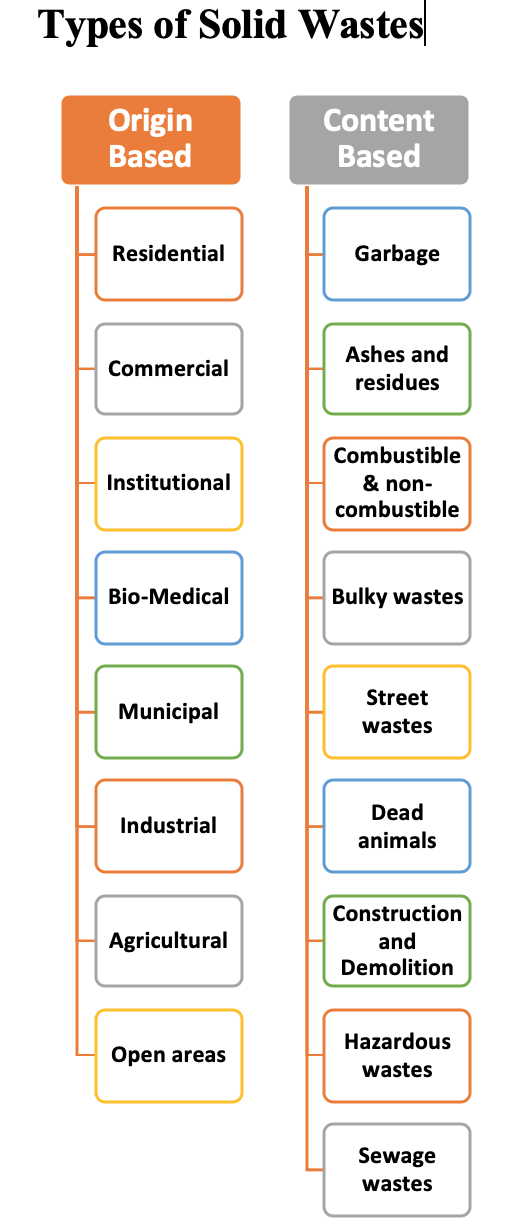
Types of Solid wastes are:
Solid waste can be characterized either on the basis of:
- Waste Origin or
- Waste composition
Types of Solid Wastes based on Origin
Here the solid waste is characterized on the basis of where it is coming from, the types of solid wastes based on origin include:
Residential
Residential waste refers to wastes from dwellings, apartments, etc., and consists of leftover food, vegetable peels, plastic, glass, metals, paper, clothes, yard waste, ashes, etc.
Commercial
Commercial waste refers to wastes consisting of leftover food, glasses, metals, ashes, etc. These are generated from stores, restaurants, markets, hotels, motels, auto-repair shops, medical facilities, etc.
Institutional
Institutional waste mainly consists of paper, plastic, glasses, etc., generated from educational, administrative and public buildings such as schools, colleges, offices, prisons, etc.
Bio-Medical
Bio-Medical waste refers to the waste generated from medical facilities such as clinics, hospitals and pharmacies. They may include human and/or animal parts, blood, surgical instruments, needles etc.
Municipal
Municipal waste includes dust, leafy matter, building debris, treatment plant residual sludge, etc. These are generated from various municipal activities like construction and demolition, street cleaning, landscaping, etc.
Industrial
Industrial waste mainly consists of process wastes, ashes, demolition and construction wastes, hazardous wastes, etc. due to industrial activities.
Agricultural
Agricultural waste mainly consists of spoiled food grains and vegetables, agricultural remains, litter, etc. generated from fields, orchards, vineyards, farms, etc.
Open areas
Open-areas waste includes wastes from areas such as streets, alleys, parks, vacant lots, playgrounds, beaches, highways, recreational areas, etc.
Types of Solid Waste based on Composition
These are the types of solid wastes which are characterized on the basis of what it contains, these include:
Garbage
This refers to animal and vegetable wastes resulting from the handling, sale, storage, preparation, cooking and serving of food. Garbage comprising these wastes contains putrescible (rotting) organic matter, which produces an obnoxious odor and attracts rats and other vermin. It, therefore, requires special attention in storage, handling and disposal.
Ashes and residues
These are substances remaining from the burning of wood, coal, charcoal, coke and other combustible materials for cooking and heating in houses, institutions and small industrial establishments. When produced in large quantities, as in power-generation plants and factories, these are classified as industrial wastes. Ashes consist of fine powdery residue, cinders and clinker often mixed with small pieces of metal and glass. Since ashes and residues are almost entirely inorganic, they are valuable in landfills.
Combustible and non-combustible wastes
These consist of wastes generated from households, institutions, commercial activities, etc., excluding food wastes and other highly putrescible material. Typically, while combustible material consists of paper, cardboard, textile, rubber, garden trimmings, etc., non-combustible material consists of such items as glass, crockery, tin and aluminum cans, ferrous and non-ferrous material and dirt.
Bulky wastes
These include large household appliances such as refrigerators, washing machines, furniture, crates, vehicle parts, tires, wood, trees and branches. Since these household wastes cannot be accommodated in normal storage containers, they require a special collection mechanism.
Street wastes
These refer to wastes that are collected from streets, walkways, alleys, parks and vacant plots, and include paper, cardboard, plastics, dirt, leaves and other vegetable matter. Littering in public places is indeed a widespread and acute problem in many countries including Pakistan, and a solid waste management system must address this menace appropriately.
Dead animals
With regard to municipal wastes, dead animals are those that die naturally or are accidentally killed on the road. Note that this category does not include carcasses and animal parts from slaughter-houses, which are regarded as industrial wastes. Dead animals are divided into two groups – large and small. Among the large animals are horses, cows, goats, sheep, pigs, etc., and among the small ones are dogs, cats, rabbits, rats, etc. The reason for this differentiation is that large animals require special equipment for lifting and handling when they are removed. If not collected promptly, dead animals pose a threat to public health since they attract flies and other vermin as they decay. Their presence in public places is particularly offensive from the aesthetic point of view as well.
Construction and Demolition Wastes
These are types of solid wastes generated as a result of construction, refurbishment, repair and demolition of houses, commercial buildings and other structures. They consist mainly of earth, stones, concrete, bricks, lumber, roofing and plumbing materials, heating systems and electrical wires.
Hazardous wastes
Hazardous wastes are defined as wastes of industrial, institutional or consumer origin that are potentially dangerous either immediately or over a period of time to human beings and the environment. This is due to their physical, chemical and biological or radioactive characteristics like ignitability, corrosivity, reactivity and toxicity. Note that in some cases, the active agents may be liquid or gaseous hazardous wastes. These are, nevertheless, classified as solid wastes as they are confined in solid containers. Typical examples of hazardous wastes are empty containers of solvents, paints and pesticides, which are frequently mixed with municipal wastes and become part of the urban waste stream. Certain hazardous wastes may cause explosions in incinerators and fires at landfill sites. Others such as pathological wastes from hospitals and radioactive waste also require special handling. Effective management practices should ensure that hazardous wastes are stored, collected, transported and disposed of separately, preferably after suitable treatment to render them harmless.
Sewage wastes
The solid by-products of sewage treatment are classified as sewage wastes. They are mostly organic and derived from the treatment of organic sludge separated from both raw and treated sewages. The inorganic fraction of raw sewage such as grit and eggshells is separated at the preliminary stage of treatment, as it may entrain putrescible organic matter with pathogens and must be buried without delay. The bulk of treated, dewatered sludge is useful as a soil conditioner but is invariably uneconomical. Solid sludge, therefore, enters the stream of municipal wastes, unless special arrangements are made for its disposal.




